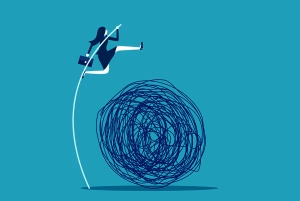
As a general rule people come to a coach because they want to be mentored and to focus on improving their life. It would be fair to say that this is because they feel they are stuck and understand a coach will help them to re-focus on their goals and achieve the results they want.
People are looking for a better way of doing things in their life, things are not really going as well as the person would like and the reason for this is that their behaviours have essentially maxed out their performance. Have you heard the old saying “doing the same things in the same ways will always get the same results”. With their current thinking it is impossible for them to perform any better than they are.
The first thing to realise is that all your behaviours are run by your unconscious mind.
What is the unconscious mind?
It is the part of us that keeps our bodies running. It operates your heart and breathing, regulates and adjusts the hormonal and chemical balances in our bodies, rebuilds the cells and is the engine that keeps it all balanced and ticking along nicely. It is also the part of us that stores all of our memories, and not just the memories we can consciously recall. It is the part of us that when given direction sets our behaviours and takes action!

What is the conscious mind?
This is the part of your mind that ‘sits on top’ of your unconscious. The tip of the iceberg if you will. Information comes in via our senses and the conscious mind is the part of us that makes sense of it all, applying critical judgement to try and understand what we are experiencing and to formulate a plan for what should be done about things. We take our life experience, make judgements regarding what is happening and consciously plan on the action we are going to take. The outcome of all of this is then passed onto the unconscious, where the decision is accepted uncritically and action is taken.
The conventional coaching approach
A lot of talking is involved where the coach will identify what the client wants and together a plan will be formulated regarding the action the client needs to undertake to try and get the outcome they desire.
It is an approach that can have some success, on the surface of things sounding like the most effective way of handling the process, how else would you go about it? But…. All of this is happening at the conscious level of the mind.

Imagine a friend coming to you and saying their problem is that they eat too many doughnuts and want to stop. Do they consciously know the answer to their problem? Of course they do – “stop eating doughnuts!” Seems quite straightforward?
But let’s look a little more at what is happening. They know the solution to their problem consciously, but this is only part of the story. Their unconscious mind is continuing to run the old behaviour, remember the unconscious is the part of us that makes things happen.
It could be the conscious mind is also thinking “hey – I have eaten doughnuts before and I love them, they are so tasty and sweet!”
Perhaps in the conscious mind there’s a compromise running. “It’s ok – I’ll eat doughnuts some of the time.” The point is that is the action the subconscious has initiated, the behaviour, is not what the person wants at all, they want to stop eating doughnuts entirely!
It’s ok if the person focuses their conscious mind on the outcome they want, the behaviour will change. But it is only really temporary. Once the attention wanders (those doughnuts are so sweet!) then the desired behaviour lapses. It is kind of like trying to push a big rock up a hill. Guess what happens when you stop pushing?
So you can see that trying to a behaviour consciously is VERY hard indeed.
NLP in coaching
An NLP coach will approach things from the point of view of changing the behaviour directly. Firstly by using both NLP and Time Line Therapy with the client to work out what drives the current undesired behaviour and ‘clean up’ all the old baggage. As this is a content-free process it differs greatly from a conventional coaching approach which consciously goes through the problem, quite possibly unintentionally helping to re-enforce it! Using NLP in coaching means there’s no need to talk through all of the sordid details Consider it a ‘reset’ if you like, a way of unsticking the client. Once done the change work can begin, working with new empowering beliefs.

No longer are they trying to push that rock up the hill because the client’s thinking changes. All those old limitations in their mind have been removed and replaced with empowering beliefs about themselves and their abilities and once that happens, the client can progress forwards easily.
Great coaching is not rocket science if you have knowledge of NLP. Great Coaching can be made so much easier when working with these amazing tools at hand!
Would you like to know more?
Our blog page has many more articles for you to read.
Alternatively, head over to our NLP glossary where you can find a list of NLP terms with lots of links to articles.
If you'd like to find out more about our courses where you can learn more head over to our courses page.
Thanks for reading!
Chris
ABNLP Trainer
Founder: Insights NLP
Phone +62 (0) 812 3895 2053













